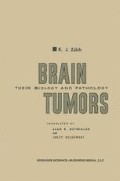Abstract
These two quotations seem to characterize so clearly the development of tumor-research over the last 100 years, that I used them to introduce a review article appearing in commemoration of Harvey Cushing’s 70th birthday. Johannes Müller indicated the direction the development was to take in the following century. Investigations of the chemical nature of a tumor, with the demonstration of protein-like or gelatine-yielding substances, have developed into micro-chemical demonstrations of the individual components of the tissue and their degeneration products, by the use of various dyes and the tissues’ response to impregnation with metallic salts. Chemical and biological investigations of the metabolism of tumors and their respiration followed. The morphological development of tumor tissue has been elucidated to some extent by the application of the tissue culture method. Johannes Müller’s idea to compare tumors with normal tissues was further pursued and enlarged upon by taking into consideration the developmental stages of cells. In the hands of Ribbert, Bailey and Cushing, this approach yielded outstanding results in the classification of brain tumors. Thus it happened that Cushing was not only able to formulate his goal in the above mentioned sentence, but also to witness its realization a decade later. This detailed study of individual tumor types had already been forecast and utilized by Johannes Müller.
“… The essential criteria for a classification of tumors according to their intrinsic properties can be found only in the study of their chemical nature, their microscopical structure, and the manner and sequence of their development … It has always seemed to me that the tumor types most correctly formulated are those that are arranged parallel to normal structures, like the tendinous, fibrous-tissue tumors … and the enchondroma, whose structure is parallel to that of cartilage…” Johannes Müller: Über den feineren Bau und die Formen der krankhaften Geschwülste. Berlin, 1838.
“… Certainly the neurosurgeon of the present day must take the wide view, if he ever is to attain the goal he should strive for, of foretelling, before the operation, not only the precise situation of a given lesion but its probable character as well…” Harvey Cushing: Intracranial Tumors and the Surgeon. The Cameron Prize Lectures, 1925.
Access this chapter
Tax calculation will be finalised at checkout
Purchases are for personal use only
Preview
Unable to display preview. Download preview PDF.
Author information
Authors and Affiliations
Rights and permissions
Copyright information
© 1957 Springer Science+Business Media New York
About this chapter
Cite this chapter
Zülch, K.J. (1957). The Historical Development and Present State of Classification. In: Brain Tumors. Springer, Boston, MA. https://doi.org/10.1007/978-1-4899-6571-4_1
Download citation
DOI: https://doi.org/10.1007/978-1-4899-6571-4_1
Publisher Name: Springer, Boston, MA
Print ISBN: 978-1-4899-6264-5
Online ISBN: 978-1-4899-6571-4
eBook Packages: Springer Book Archive

